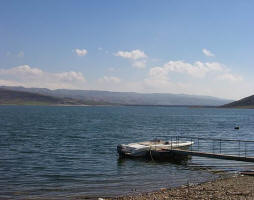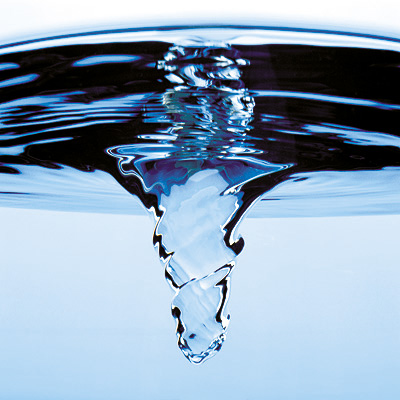 Egypt’s water crisis: a recipe for disaster
Egypt’s water crisis: a recipe for disaster
Egypt has been suffering from severe water scarcity in recent years. Uneven water distribution, misuse of water resources and inefficient irrigation techniques are some of the major factors playing havoc with water security in the country. Being more or less an arid country, Egypt is heavily dependent on rain in other countries to support its rapidly growing population and development. The River Nile is the lifeline of the country as it services the country’s industrial and agricultural demand and is the primary source of drinking water for the population.
Rising populations and rapid economic development in the countries of the Nile Basin, pollution and environmental degradation are decreasing water availability for Egypt. Egypt is facing an annual water deficit of around 7 billion cubic metres. In fact, the United Nations is already warning that Egypt could run out of water by the year 2025.
Let us have a close look at major factors affecting Egypt’s water security:
Population explosion
Egypt’s population is mushrooming at an alarming rate and has increased by 41% since the early 1990s. Recent reports by the government suggest that around 4,700 newborns are added to the population every week, and future projections say that the population will grow from its current total of 80 million to 98.7 million by the year 2025. The rapid population increase multiplies the stress on Egypt’s water supply by more water requirements for domestic consumption and increased irrigation water use to meet higher food demands.
Inefficient irrigation
Egypt receives less than 80mm of rainfall a year, and only 6% of the country is arable and agricultural land, with the rest being desert. This leads to excessive watering and the use of wasteful irrigation techniques such as flood irrigation, an outdated method of irrigation where gallons of water are pumped over the crops.
Nowadays, Egypt’s irrigation network draws almost entirely from the Aswan High Dam, which regulates more than 18,000 miles of canals and sub-canals that push out into the country’s farmlands adjacent to the river. This system is highly inefficient, losing as much as 3 billion cubic meters of Nile water per year through evaporation and could be detrimental by not only intensifying water and water stress but also creating unemployment. A further decrease in water supply would lead to a decline in arable land available for agriculture, and with agriculture being the biggest employer of youth in Egypt, water scarcity could lead to increased unemployment levels.
Pollution
Agricultural runoffs, industrial effluents and municipal sewage are being recklessly dumped into the Nile River, gradually making its water unfit for human consumption. Sewage water from slums and many other areas in Cairo is discharged into the river untreated due to lack of water treatment plants. Agricultural runoffs frequently contain pollutants from pesticides and herbicides, which have negative effects on the river and the people using it. Industrial effluents are often highly toxic, containing heavy metals that can combine with the suspended solids in domestic wastewater to form muck. All of these factors combine together to make Nile a polluted river which may spell doom for the generations to come.
Regional upheaval
Egypt controls the majority of the water resource extracted from the Nile River due to a colonial-era treaty, which guaranteed Egypt 90% share of its water, and prevented their neighbours from extracting even a single drop without permission. However, countries along the Nile such as Burundi and Ethiopia are taking advantage of the political strife that has engulfed Egypt and are gaining more control over extraction. With the Nile supplying 95% of Egypt’s fresh water, losing some of this supply would cause additional problems.
The water issue in Egypt is rapidly assuming alarming proportion. By the year 2020, Egypt will be consuming 20% more water than it has. With its loosening grip on the Nile, water scarcity could endanger the country’s stability and regional dominance. It is imperative on the Egyptian government and the entire population of to act swiftly and decisively to mitigate water scarcity, implement water conservation techniques and control water pollution develop plans that would install more efficient irrigation techniques, and control water pollution in order to avoid a disaster.
--
We are grateful to EcoMENA for the opportunity to reproduce this article. EcoMENA is a website focused on raising awareness of renewable energy, sustainability, waste management, environment protection, energy efficiency and resource conservation in the Middle East and North Africa (MENA) region.
| Contact information |
Amir Dakkak
(email: http://www.linkedin.com/pub/amir-dakkak/72/51a/a08) |
|---|---|
| News type | Inbrief |
| File link |
http://www.isonomia.co.uk/?p=2317 |
| Source of information | EcoMENA |
| Keyword(s) | water crisis |
| Subject(s) | AGRICULTURE , ANALYSIS AND TESTS , CHARACTERISTICAL PARAMETERS OF WATERS AND SLUDGES , DRINKING WATER , DRINKING WATER AND SANITATION : COMMON PROCESSES OF PURIFICATION AND TREATMENT , ENERGY , FINANCE-ECONOMY , HEALTH - HYGIENE - PATHOGENIC MICROORGANISM , HYDRAULICS - HYDROLOGY , INDUSTRY , INFORMATION - COMPUTER SCIENCES , INFRASTRUCTURES , MEASUREMENTS AND INSTRUMENTATION , METHTODOLOGY - STATISTICS - DECISION AID , NATURAL MEDIUM , POLICY-WATER POLICY AND WATER MANAGEMENT , PREVENTION AND NUISANCES POLLUTION , RIGHT , RISKS AND CLIMATOLOGY , SANITATION -STRICT PURIFICATION PROCESSES , SLUDGES , TOOL TERMS , TOURISM - SPORT - HOBBIES , WATER DEMAND , WATER QUALITY |
| Relation | http://www.ecomena.org/ |
| Geographical coverage | Egypt |
| News date | 23/10/2013 |
| Working language(s) | ENGLISH |
 you are not logged in
you are not logged in





